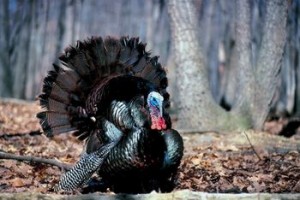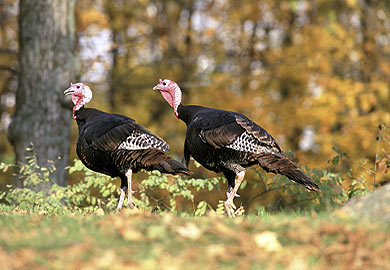 Annually since the early 1980’s, the S.C. Department of Natural Resources (DNR) conducts a Summer Turkey Surveyto estimate reproduction and recruitment of turkeys in South Carolina. The survey involves agency wildlife biologists, technicians and conservation officers, as well as many volunteers from other natural resource agencies and the general public. Unfortunately wild turkey recruitment decreased substantially in 2013 likely due to record rains statewide this summer.
Annually since the early 1980’s, the S.C. Department of Natural Resources (DNR) conducts a Summer Turkey Surveyto estimate reproduction and recruitment of turkeys in South Carolina. The survey involves agency wildlife biologists, technicians and conservation officers, as well as many volunteers from other natural resource agencies and the general public. Unfortunately wild turkey recruitment decreased substantially in 2013 likely due to record rains statewide this summer.
Although wild turkeys nest primarily in April and May in South Carolina, the survey does not take place until late summer, according to Charles Ruth, DNR Deer and Wild Turkey Program coordinator. Therefore, the survey statistics document poults (young turkeys) that actually survived and entered the population going into the fall.
Although reproduction in turkeys has been somewhat better the last couple of years, indicators plummeted in 2013, said Ruth. Average brood size of 3.9 poults remained relatively consistent, however, the total recruitment ratio of 1.3 was down about 32 percent. Recruitment ratio is a measure of young entering the population based on the number of hens in the population. This figure was driven by a high percentage of hens (66%) that had no poults at all. Both recruitment ratio and percentage of hens with no poults were the lowest since the survey began in 1982. “At the regional level it appears that reproduction was poor in most of the state.”
Unlike deer, wild turkeys are much more susceptible to significant fluctuations in reproduction and recruitment. Lack of reproductive success is often associated with bad weather (cold and wet) during nesting and brood rearing season and most of the state saw unprecedented rainfall that began late in the spring and continued throughout most of the summer
What does poor reproduction in 2013 mean for the spring turkey hunter? Ruth indicated, “Spring harvest trends have followed the trends in reproduction in recent years with harvest figures being better in 2012 and 2013 due to better reproduction. However, with reproduction way down this summer the outlook for the 2014 spring season is not terribly encouraging. One positive note, said Ruth, is the gobbler to hen ratio remained good with a statewide average of 0.70, about average for the last few years. Many experts believe that when gobbler to hen ratios get below 0.5, the quality of hunting can be impacted because hens are extremely available which affects gobbling and responsiveness to calling by hunters.
“The bottom line,” Ruth said, “the state’s turkey population remains about 15 percent below record levels of 10 years ago. Although the harvest has increased a little the last couple of years, we need better reproduction for several years to get the population back up. That is the nice thing about turkeys; given the right conditions they can naturally bounce back in a short period of time.
“Anyone interested in participating in the annual Summer Turkey Survey is encouraged to sign-up”, said Ruth. The survey period is July 1-August 29 annually and those who participate typically spend some reasonable amount of time outdoors during that time period. Cooperators obviously must be able to identify wild turkeys and must be comfortable in telling the difference between hens, poults, and gobblers. Cooperators are provided with survey forms prior to the survey and a reporting notice and postage paid envelop at the end of the survey period. If you would like to participate in the survey, send your name and address to Summer Turkey Survey, P.O. Box 167, Columbia, SC 29202. You will be added to the cooperator list and receive materials at the end of June annually.

